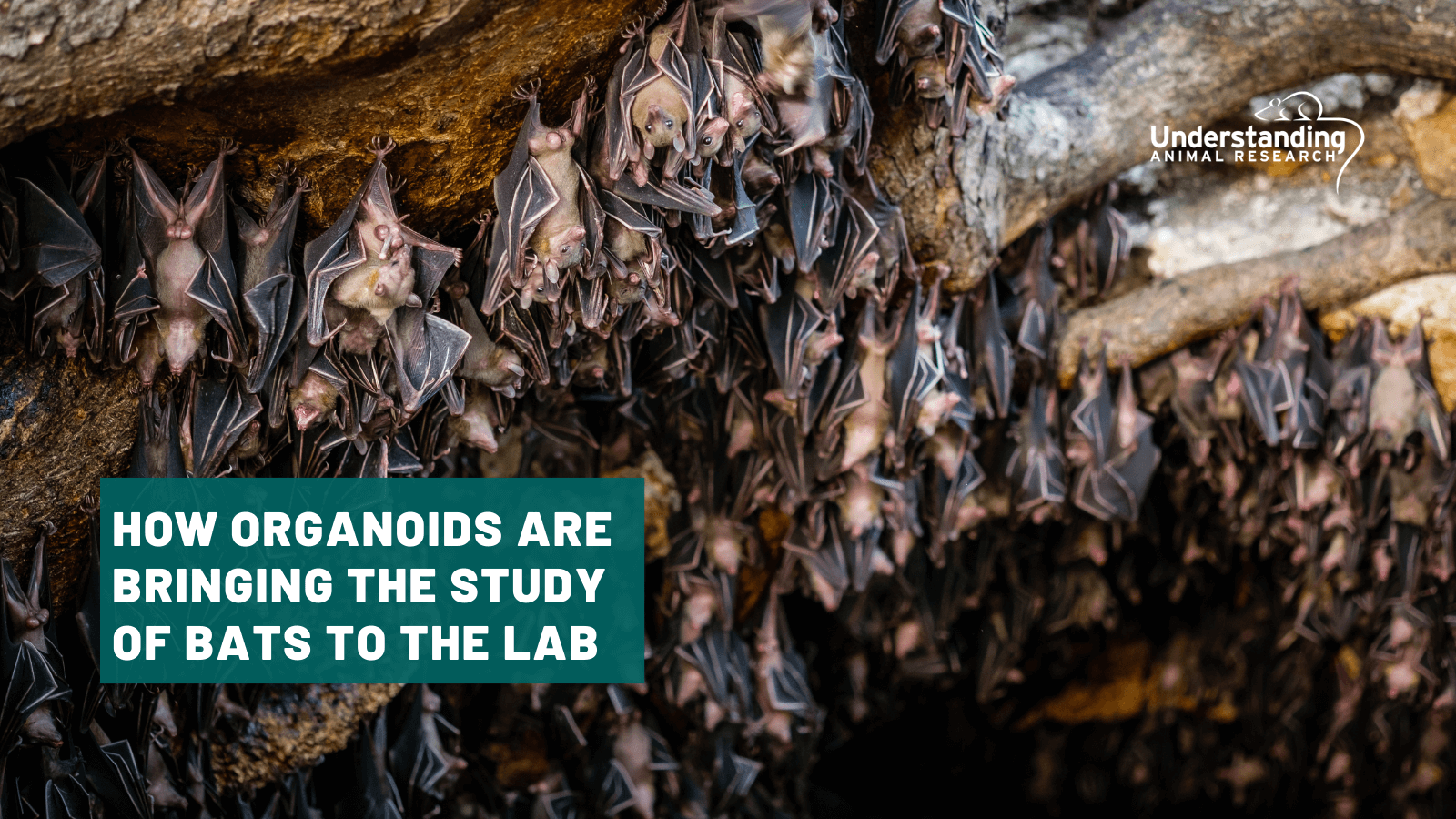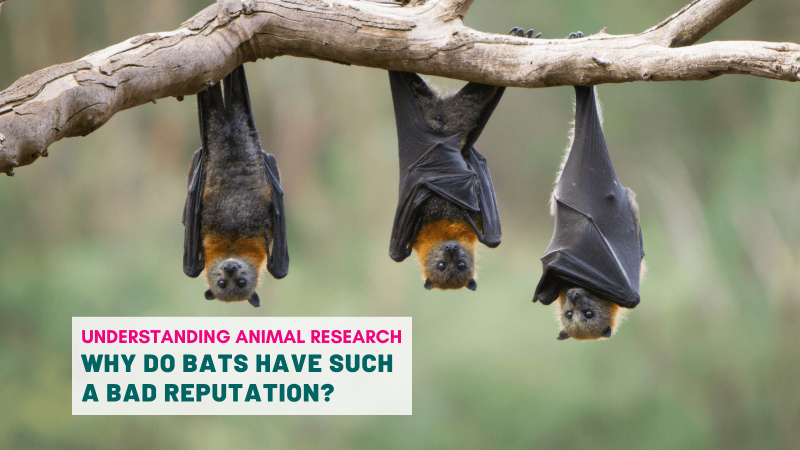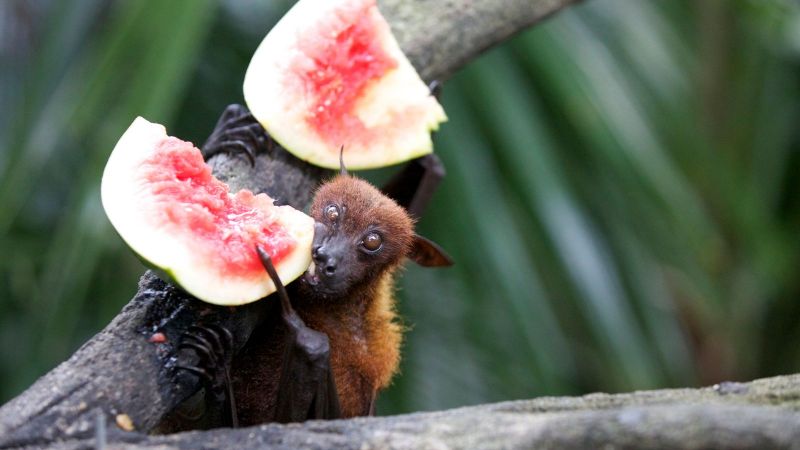
The absence of an in vitro model for the study of bat viruses has hindered the battle against potential emerging zoonotic pathogens, including coronaviruses. But bat organoids could help researcher get a better look at previously ‘uncultivable’ viruses without bringing these wild and sometimes endangered animals to the lab. A new tool to be one step ahead on future epidemics.
Over the past decades, organoids have been brought to the forefront of science. Most human organs can now be 'grown' in petri dishes. Major breakthroughs in cell culture and 3D printing of scaffolds and tissue have allowed for more and more complex structures that resemble the human organs to be created in vitro.
From single cell structures to multicellular complex differentiated 3D arrangements, organoids are getting closer by the minute to modelling whole body physiology. Although they will never be as complete as an animal model, they are helping replace and reduce the number of animals used in research and refine studies.
This is particularly true for the study of disease. Organoids can reveal organ specific mechanisms of pathogenesis. And because the human gastrointestinal tract is one of the most common routes of microbial invasion, human intestinal organoids have become popular in vitro tools for modelling enteric infections.
These organoids are of particular interest for the study of the infamous new coronavirus, SARS-CoV-2. As the most common animal models in the lab, mice, are not naturally susceptible to the disease, other models were explored. Genetically modified mice, hamsters, ferrets and non-human primates, but also computer models, cell cultures, and organoids, have been fundamental in the recent strives against the virus.
In the search to better understand SARS-CoV-2, scientists created the first bat intestinal organoid that simulates the cellular composition of bat intestinal epithelium. Why? To understand where the virus comes from, and especially characterise similar future threats that might come from bats.
Indeed, SARS-CoV-2 is thought to have originated in bats. Bats are natural reservoirs for a variety of viruses, especially RNA viruses, that cause serious disease in humans and animals. In many respects, they are the perfect reservoir for emerging zoonotic pathogens.
The bat’s innate immune response has unique properties that allow it to handle viruses and coexist with them. Bats have therefore the capacity to host many different pathogens without showing any symptoms. The sheer number and diversity of viruses identified in bats is extraordinary and appears to be increasing almost daily.
So scientists went looking for coronaviruses in bats, specifically the horseshoe bat species Rhinolophus spp. Rhinolophus sinicus (R. sinicus), had been identified as a natural host of SARS-CoV.The extensive search for the progenitor of SARS-CoV, led to the discovery of large numbers of related coronaviruses from faecal specimens or anal swabs of Chinese horseshoe bats.
However, except for three strains, to date, most identified bat SARSr-CoVs have not been successfully isolated and cultivated. Despite multiple attempts using bat primary cell cultures and immortalized bat cell lines, as well as the commercially available bat cell lines, isolation of SARSr-CoV using a bat cell line has never been documented.
Up until now, there had been no direct evidence of SARSr-CoV infection in these bats despite finding traces of the viruses in the faeces. This presents a certain difficulty in the study of bat viruses, that are particularly susceptible to breaching the species barrier and causing an epidemic. Especially since these animals are difficultly accessed and studied in the wild and are hard to keep in the lab.
The absence of a readily accessible in vitro model that can faithfully represent native bat cells has been a major obstacle to isolate and study bat viruses, including bat SARSr-CoVs. Researchers therefore attempted and succeeded in building a bat organoid model that could host these viruses.
Using a protocol used for human intestinal organoids, they generated bat small intestinal organoids (enteroids) using crypts isolated from the intestines of R. sinicus bats. The differentiated bat enteroids managed to mimic the multicellular composition of native bat small intestinal epithelium with four major intestinal cell types: enterocytes, goblet cells, Paneth cells and enteroendocrine cells.
To test the robustness of this new in vitro model for the study of microbial infections in bat intestine, scientists inoculated the bat enteroids with SARS-CoV-2. They found evidence that these bat enteroids are fully susceptible to SARS-CoV-2 infection and sustain robust viral replication.
The researchers are now looking into expanding the armamentarium of virology airway and intestinal organoids derived from other suspected coronavirus host species, such as other bats, civets and pangolins.
Although not yet perfect, these bat enteroids open up a new avenue for isolating and cultivating other, previously “noncultivable” bat viruses – a longstanding challenge against numerous bat viruses of high zoonotic potential. By growing various coronaviruses, scientists may be able to identify other viruses with high potential to harm people, and thus get a head start on future epidemics.
It is a joint success. Such an approach may prepare us better for a next pathogenic event but also will minimize the impact of coronavirus research on endangered species. However, organoids can do a lot — but not everything. They will never completely replace animal models. Despite being able to link several miniature organs together, they will lack the perspective the study of a whole organism can offer, including interactions with cells from the immune system. There is still a lot of progress that needs to be made before they can, even partially, eclipse animal research.
Last edited: 2 April 2024 16:01



